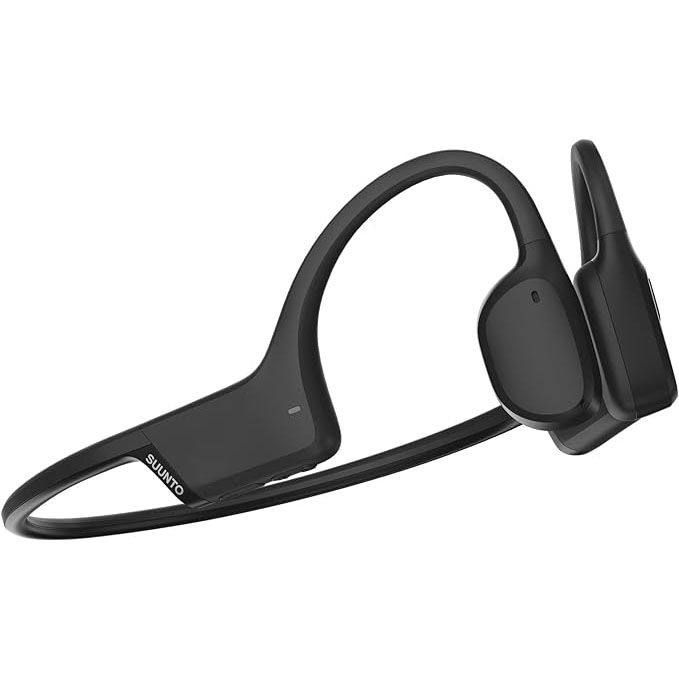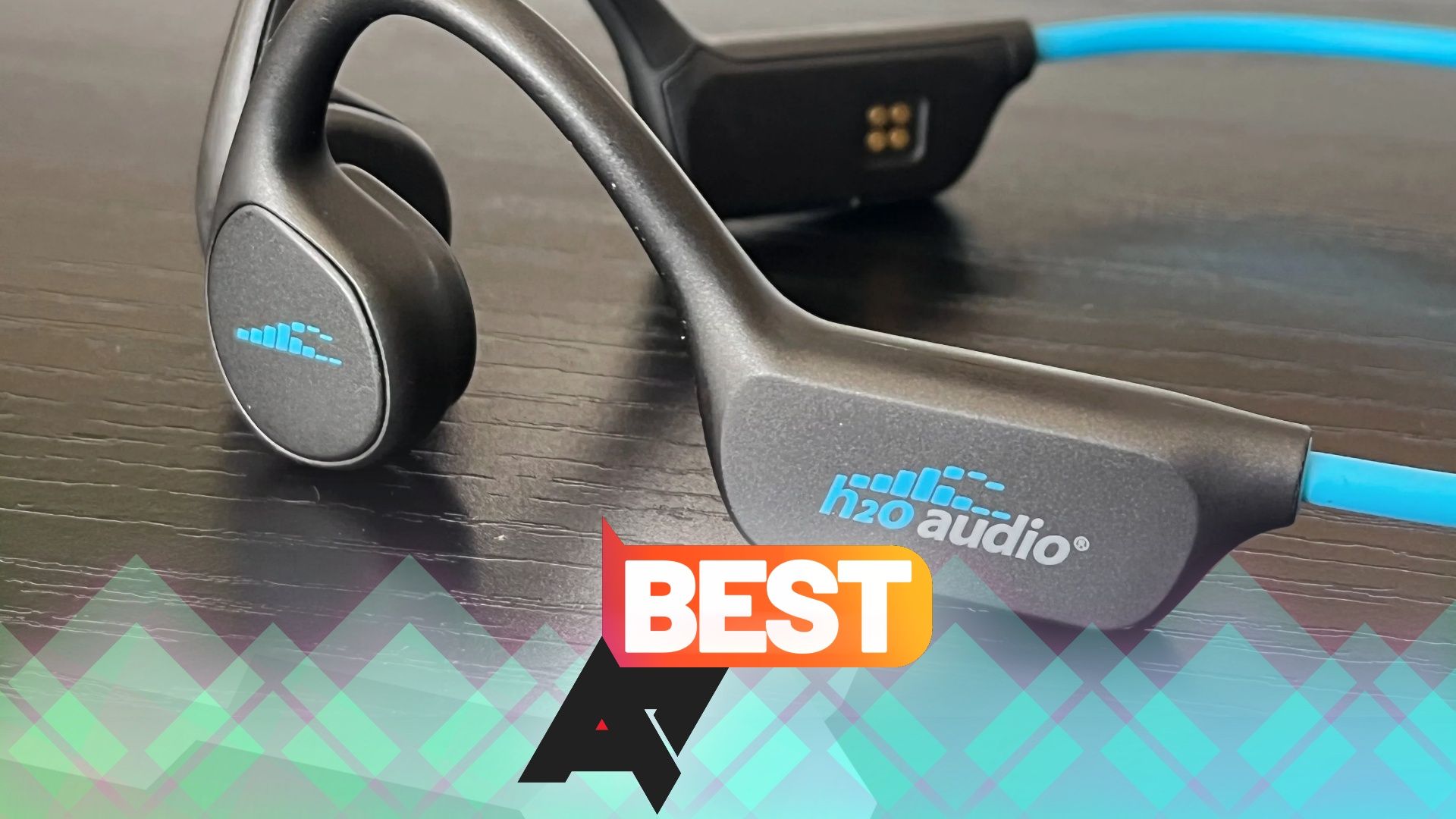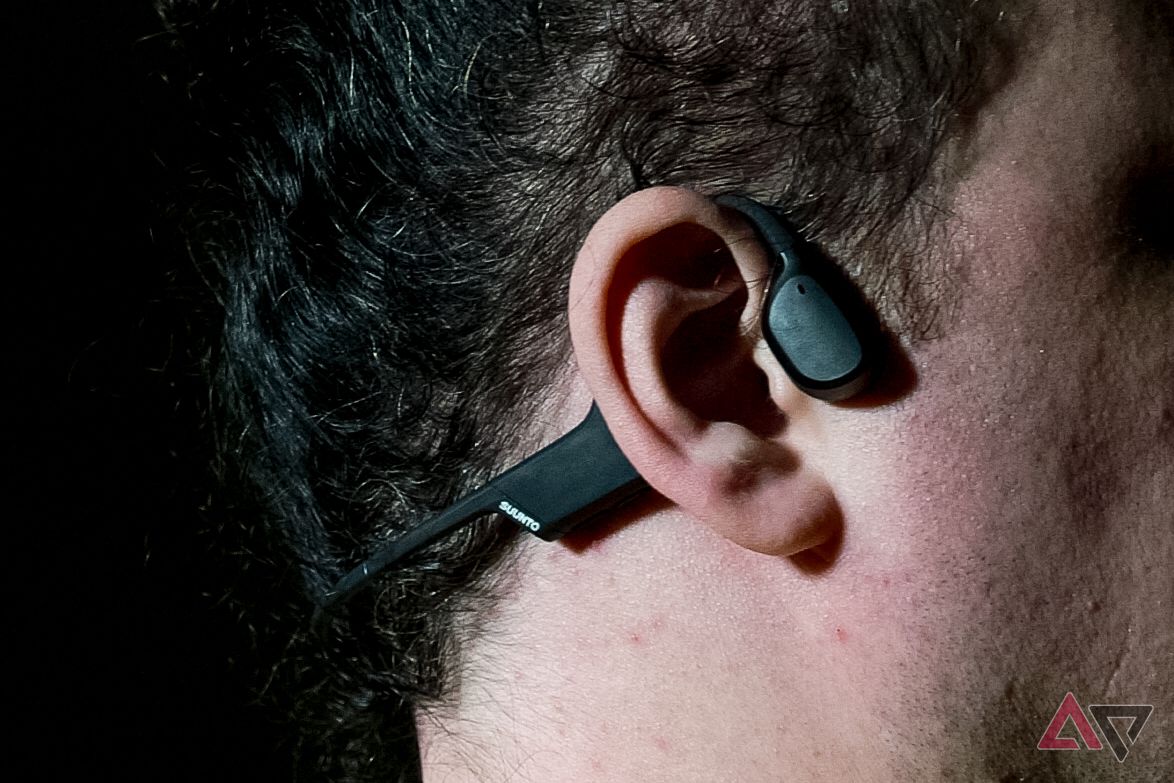The promises of bone-conduction headsets have always been alluring. How they work is actually quite remarkable. They tick a lot of boxes: not having to choose between hearing your music and your surroundings, no ear fatigue after hours of listening, and not being disruptively loud to those around you. Even the best bone conduction headsets aren’t without compromise, though some of them lack the bells and whistles found on the Suunto Sonics.
Between the sturdy and lightweight titanium reinforced headband and the grippy rubberized exterior, the Suunto Sonics seem laser-focused on staying in place all day. Plus, they are unobtrusive enough that you might forget you’re wearing them to begin with. While there are still a few questionable spec shortfalls and inclusions, they’re definitely one of the better bone-conduction headsets I’ve gotten my hands on.

Suunto Sonic
The Suunto Sonic bone conduction headset is a premium running device with a price to match that boasts a 10-hour battery life, a titanium alloy reinforced neckband, a non-slip exterior that can stay put all day, and an IP55 rating.
- Stays in place very well
- Great audio quality for bone-conduction
- Comfortable enough to wear for its 10-hour battery life
- I’ve seen better IP ratings on significantly cheaper headsets
- Not a drastic leap in audio quality going from SBC to aptX Adaptive
Price and availability
Premium build with a premium price
The Suunto Sonic headset is available on Amazon and Suunto’s website and will run you $149 whether you get it in its subtle black or vibrant lime green colorways. While that price still positions them under Suunto’s most expensive bone-conduction headset, the $200 Suunto Wing, it still puts them much closer to the top of the price range than the bottom in this category.
Specifications
- Battery life
- 10 hours
What’s good about the Suunto Sonic headset?
Solid build, featherweight lightness
While most earbuds and headphones on the market are laser-focused on shutting out as much outside noise as possible, plenty of situations call for open listening that most transparency modes aren’t up to snuff for. While doing a solo workout at a public gym can benefit from active noise cancellation, it’s prudent to keep an ear out for cars while you’re on your bike or out for a run.
If you’re down for a marathon listening session – quite literally – the 10-hour battery life is more than enough to get you through 26 miles, whether running or walking. The ultralight frame and soft-touch grip made it easy for me to keep it on all day without any discomfort. Even with jarringly bad running form, I wasn’t able to shake the Suunto Sonics out of place, or even by whipping my head around for that matter.
Normally, between quick, jerky movements and a tighter-than-ideal fit, the overwhelming majority of bone conduction headsets I’ve tried have been unable to stay perfectly in place and have delivered poor sound quality as a result. I’m happy to say that the Suunto Sonics have avoided that annoyance during my runs and kettlebell workouts, despite making fairly minimal contact around both ears.
The Sonics’s sleek look is matched by its minimalist controls. In total, there are only three buttons on the entire headset: volume up just behind your right ear, which doubles as the power button; volume down just behind that; and a multifunction button for everything else on the left nodule.
Curiously, the multifunction button has more controls by default than I was able to find in the app, manual, or on Suunto’s site, but nothing unexpected. Single press for play/pause, held press for the assistant trigger, along with double and triple presses for skipping forward and back respectively; no surprises here.
Anyone like me who’s not a fan of all-but-required apps for their listening devices can breathe a sigh of relief because Suunto’s app is more focused on exercise tracking with its smartwatch. Aside from the app sending voice notes to your headset about your run, it’s only necessary for switching between the quiet and loud environment modes and easily setting up Bluetooth multipoint.
A Bluetooth headset review wouldn’t be complete without mentioning the sound quality, and while I’d love to say the Suunto Sonics are just plain great in that respect, it’s more accurate to say they’re great for bone conduction.
There’s no shade being thrown with that remark; this product category has always been more about making it easier to not get hit by cars while still hearing your music, and not about some transcendental Hi-Fi experience. That being said, while I’m normally a fan of higher-bitrate Bluetooth codecs, manually switching between SBC and aptX Adaptive codecs didn’t have nearly as significant an effect as it does with conventional earbuds.
What’s bad about the Suunto Sonics?
Some features were skimped, and others were unnecessary
Between the simplified controls, stellar build quality, and decent audio quality, it’s a little hard to find anything to hate about the Suunto Sonics, but I did at least find a few things I wasn’t thrilled about. The $150 price may feel in line with the titanium metal in the neckband, for instance, but the price feels harder to justify when the IP-rating is middling in this category, and the sound quality doesn’t get a significant bump from its better-than-basic Bluetooth codec.
While there’s no shortage of bone-conduction headphones for swimming, if water resistance is your biggest concern, it’s not unusual for run-of-the-mill bone-conduction headsets to have just as good or better of an IP rating as the Suunto Sonics for less than half the price.
The IP55 rating isn’t bad if you’re comparing them to standard earbuds, but it’s not an impressive feat in this product category, especially when they carry a price this high. It’s doubly frustrating since the Sonics recharge with a magnetic pogo-pin port you’d expect from something with better water resistance, complete with a USB cable you hopefully never lose.

Best bone-conduction headphones in 2024
Game-changing headphones for sports and fitness enthusiasts
Should you buy them?
Not amazing, but not disappointing either
While the Suunto Sonics aren’t perfect, and they’re edging towards a price point that demands exactly that, they’re still an overwhelmingly competent product. For what they are, the sound quality is about as good as could be expected, and the fit and finish are better than a lot of the other bone-conduction headsets I’ve gotten my hands on.
The positives are overwhelming, while the negatives are all fairly minor, which makes them a solid contender so long as you don’t need a pair for the pool.

Suunto Sonic
The Suunto Sonic bone conduction headset is a premium running device with a price to match that boasts a 10-hour battery life, a titanium alloy reinforced neckband, a non-slip exterior that can stay put all day, and an IP55 rating.






